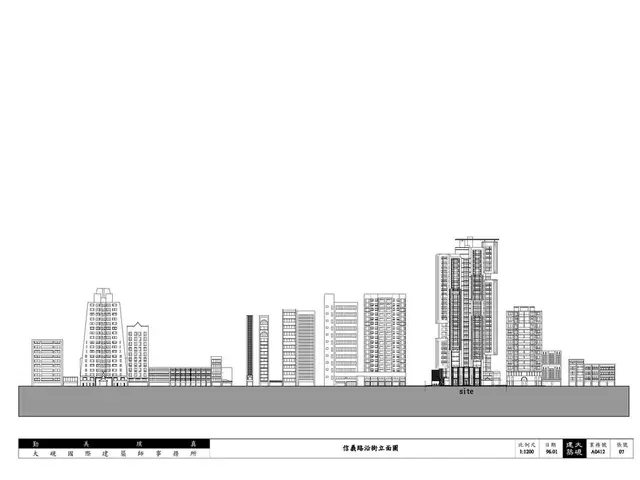California's Bail System: Evolving Landscape
California Jail System: The Evolution of Bail Policies and Consequences
The bail scene in California is experiencing a major shakeup, altering jail populations, and stirring conversations around public safety and criminal justice.
Bail System Before Policy Revolution
In the past, California's bail system was straightforward: courts set a cash bail amount, and those unable to pay would remain incarcerated. This system faced criticism for being unfair and overly harsh on underprivileged and minority communities, leading to heated debates within California's legal circles.
Policy Changes Amidst Covid
During the Covid-19 pandemic, California enacted significant policy changes to its bail system. These included emergency bail orders and zero-bail policies, designed to reduce jail populations and mitigate the spread of the virus.
Emergency bail orders and zero-bail policies
The introduction of emergency bail orders and zero-bail policies in April 2020 allowed individuals charged with certain minor crimes to leave jail without paying bail. This contrasted with the pre-pandemic era when everyone either had to pay or stay behind bars until trial.
Judges in each county established lists of crimes eligible for zero bail. Offenses such as burglary and car theft made the list, but violent crimes were excluded. These changes led to a surge in the release of inmates, lowering the risk of virus transmission in jails.
Impact on jail bookings and populations
California's policy modifications have left a lasting impact on jail bookings and populations:
Emergency Bail Orders
| Impact | Description ||-----------|-----------------|| Emergency Bail Orders | Reduced cash bail to zero for most misdemeanors and lower-level felonies, resulting in a drop in jail populations. || Zero-Bail Policies | Implemented to prevent Covid-19 spread in jails, leading to fewer individuals in pretrial detention. || Jail Bookings | A significant decrease in jail bookings due to the release of non-violent offenders. || Jail Populations | Dropping numbers of inmates as policies aimed to combat overcrowding and manage the pandemic. |
These reforms were instrumental in the state's efforts to combat overcrowding and cope with the pandemic.
Reduced bail to $0 for most misdemeanours and lower-level felonies. Led to a decrease in jail populations.
Post-Covid Trends in Rearrests
Policy changes in California led to a temporary rise in felony rearrests followed by a steady decline in misdemeanor rearrests.
Initial increase in felony re-arrests
Following the implementation of new bail policies, there was a noticeable increase in felony rearrests due to a higher number of defendants being released before trial. This escalation provoked concerns about public safety and crime rates.
Zero-Bail Policies
Subsequent decrease in misdemeanor rearrests
After the initial surge in felony re-arrests, misdemeanor rearrests started to fall. Reports and studies demonstrated a consistent downturn in arrests for minor offenses, indicating that the new bail policies may help keep some people out of jail without causing a spike in crime.
Implemented to lower the risk of Covid spread in jails. Resulted in fewer people being held in pretrial detention.
Impact of Recent Legislation on Bail Practices
Recent California legislation has made it easier for many to avoid pretrial detention, saving local governments substantial resources.
Reduced pretrial detention
Bail reform legislation in California reduces the number of individuals held in pretrial detention, ensuring that people are not kept in jail just because they cannot afford bail. This change promotes greater fairness within the system.
Jail Bookings
Economic benefits for local governments
Diminished pretrial detention results in cost savings for local administrations, as reduced inmate populations mean less expenditure on housing, meals, and care for those awaiting trial. These material savings offer an opportunity for reinvestment in crucial public services, such as safety programs or crime prevention initiatives.
Significant decrease observed. Policies allowed release of individuals for non-violent offenses.
Challenges in Bail Reform in California
Bail reform in California continues to face hurdles due to public safety concerns and ongoing debates.
Public safety apprehensions
Concerns about public safety persist as critics argue that bail reforms may lead to more crime. They cite the initial increase in felony rearrests as evidence of this. This fear has ignited debate about how to balance justice with public safety.
Jail Populations
Ongoing public debate
The discourse surrounding bail reform in California remains intense, with differing opinions on whether changes enable a fairer system or pose threats to public safety. The dialogue, often heated, continues as lawmakers grapple with finding a solution that prioritizes both justice and public safety.
Numbers dropped as policies aimed to minimize jail crowding and combat Covid.
Experts argue that finding common ground is crucial in the ongoing quest to improve the criminal justice system while maintaining public safety.
The Takeaway
California's bail system is undergoing significant changes aiming to reduce pretrial detention and allocate resources effectively. While these reforms address concerns about overcrowding, they face challenges related to public safety and ongoing debates around their effects. The evolving landscape demonstrates a complex balance between justice and community safety in California.
Tim Williamson, a psychology graduate from the University of Hertfordshire, takes an keen interest in the fields of mental health, wellness, and lifestyle.
Enrichment Data:California's bail reform efforts continue to evolve, with notable changes in Los Angeles County's policies and statewide trends. The Supreme Court of California ruled in 2021 that cash bail must be based on ability to pay, although this did not entirely eliminate cash bail. The pandemic also contributed to shifts in jail populations through early release programs from state prisons and local jails.The impact of these reforms has been mixed: while they have reduced jail overcrowding, concerns about public safety and crime rates remain, with reports of initial increases in felony rearrests followed by a decrease in misdemeanor rearrests.
- In the field of psychology, Tim Williamson, a graduate from the University of Hertfordshire, shows a keen interest in studying the effects of California's evolving bail policies on mental health and community wellness.
- The ongoing debate about California's bail system reforms extends to the realm of policy-and-legislation and general news, as experts and lawmakers grapple with striking a balance between ensuring fairness and managing public safety concerns.







